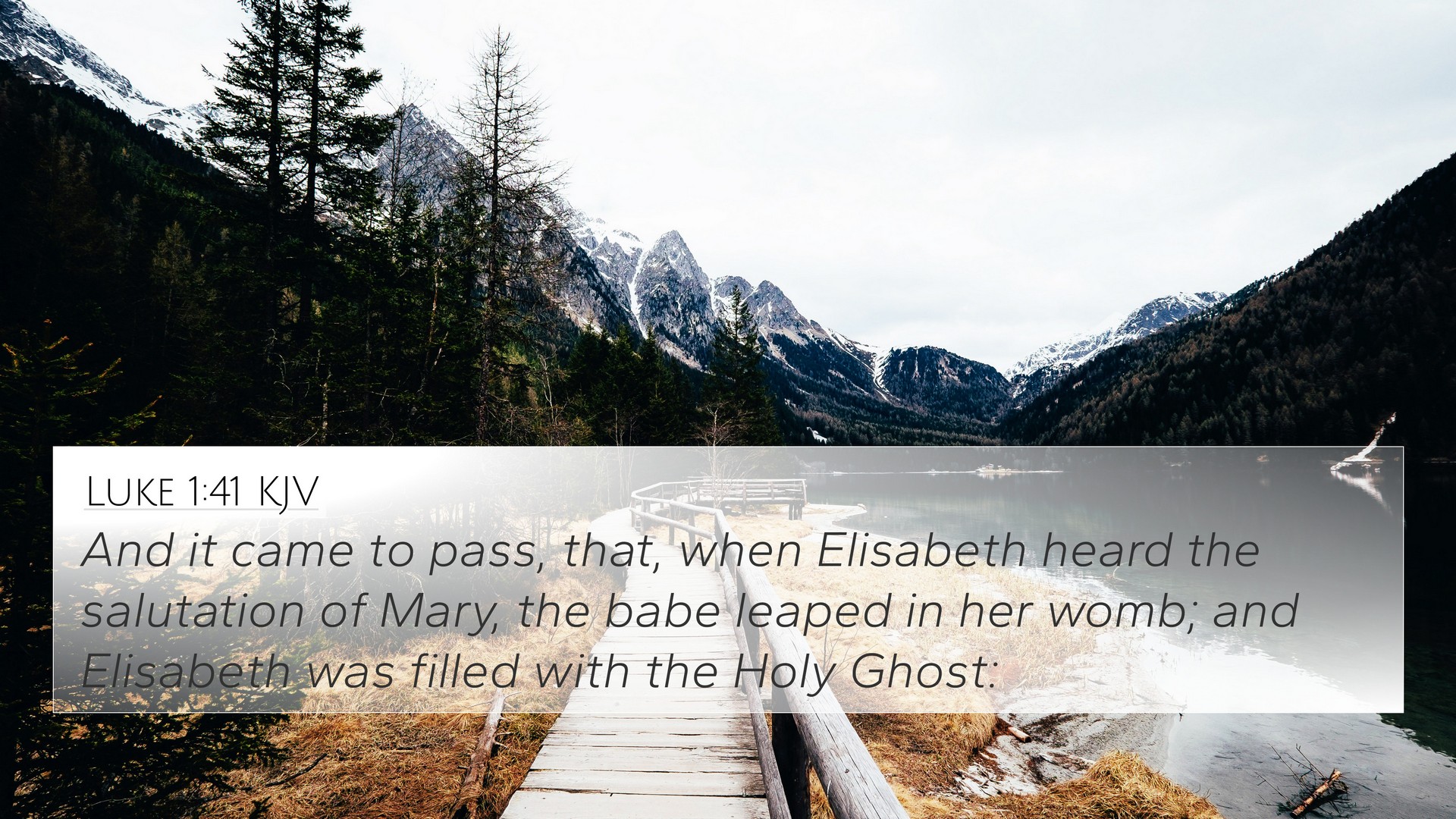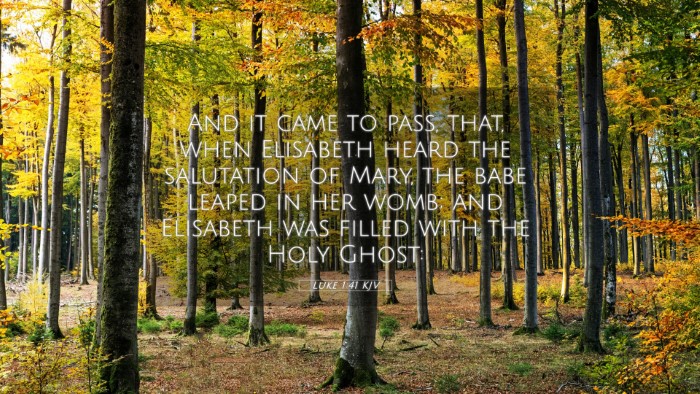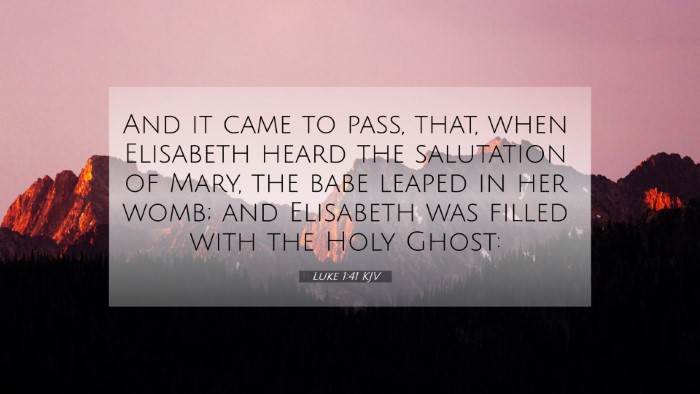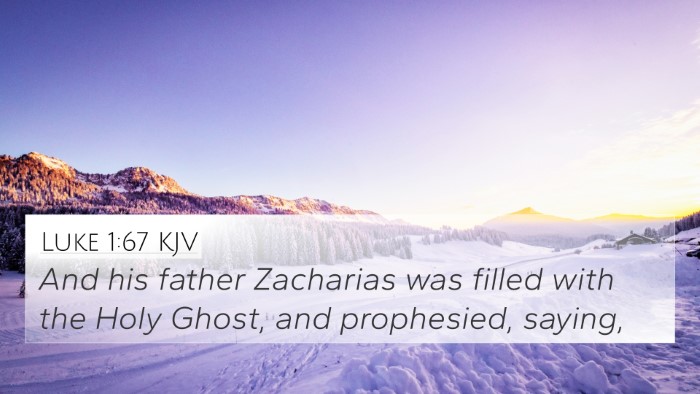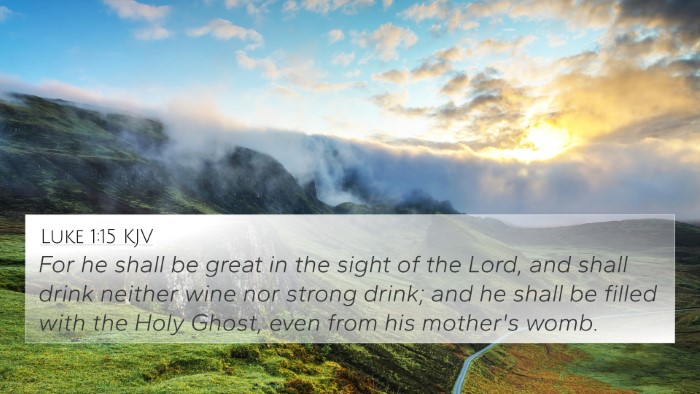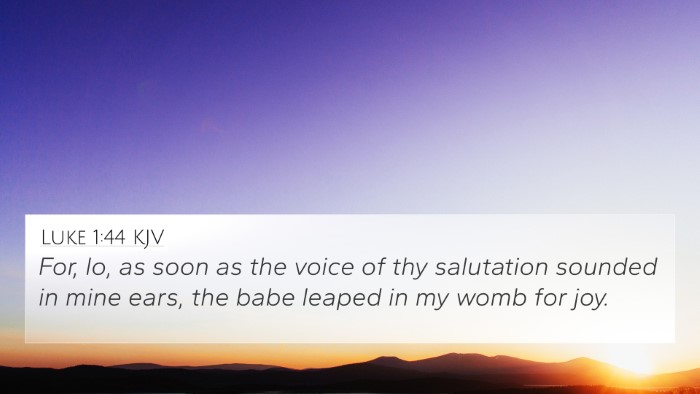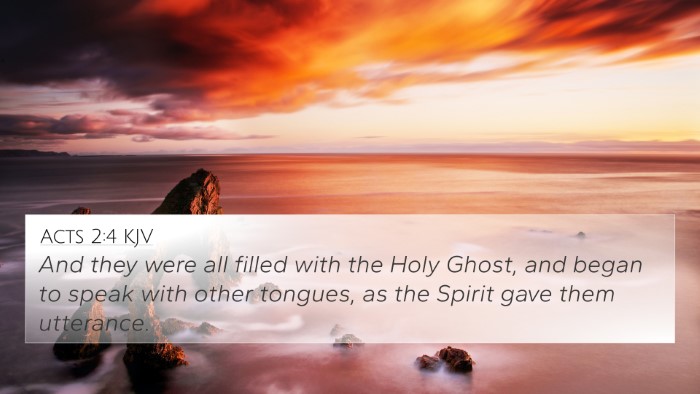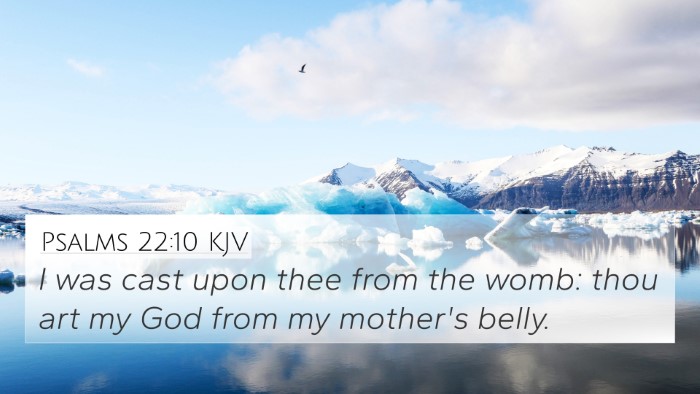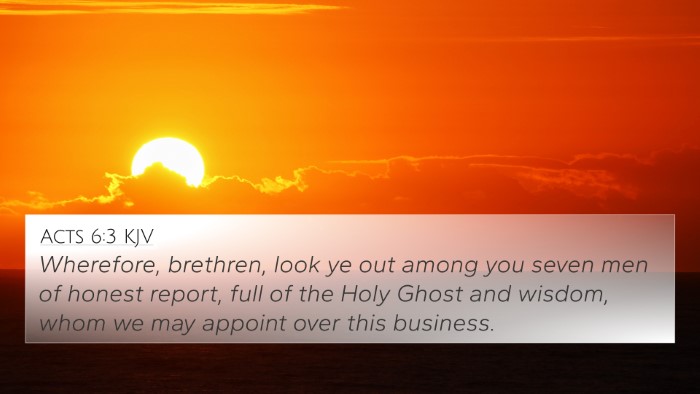Understanding Luke 1:41
In this verse, we see a powerful moment of recognition and joy that encapsulates the significance of Jesus' coming and the fulfillment of God's promises. Here we summarize the insights from respected public domain commentaries by Matthew Henry, Albert Barnes, and Adam Clarke.
Context of the Verse
Luke 1:41 states:
"And it came to pass, that, when Elisabeth heard the salutation of Mary, the babe leaped in her womb; and Elisabeth was filled with the Holy Ghost."
Summary of Commentary Insights
- Matthew Henry: This passage illustrates the spirit of prophesy and divine revelation at work. Through Elizabeth's recognition of Mary’s presence, we understand the early acknowledgment of the Messiah, even before His birth. The leaping of the child signifies joy in the presence of Christ, indicating the recognition of Jesus’ lordship even in infancy.
- Albert Barnes: Barnes emphasizes the spiritual significance of the event. The Holy Spirit’s influence upon Elizabeth highlights that the recognition of Christ is a work of divine grace. This moment not only signifies personal joy for Elizabeth but also points to the broader fulfillment of God’s plan of salvation. The phrase "filled with the Holy Ghost" indicates that prophetic insights and joy come from the Holy Spirit.
- Adam Clarke: Clarke notes that this encounter between Mary and Elizabeth serves to strengthen the faith of both women. The “babe leaping” serves as a metaphor for spiritual awakening—an early celebration of the Incarnation. Elizabeth’s response also provides a model for recognizing and responding to the work of God in the lives of others.
Significance of the Leaping Babe
The babe, representing John the Baptist, leaps for joy in anticipation of the Messiah's arrival. This event reinforces the theme of recognition of Christ's significance, not just among adults but from even before birth.
Bible Verse Cross-References
This verse is interconnected with several other scriptures that highlight similar themes surrounding recognition, joy, and divine appointment:
- Luke 1:15: "For he shall be great in the sight of the Lord, and shall drink neither wine nor strong drink; and he shall be filled with the Holy Ghost, even from his mother’s womb."
- Matthew 11:11: "Verily I say unto you, Among them that are born of women there hath not risen a greater than John the Baptist..."
- Jeremiah 1:5: "Before I formed thee in the belly I knew thee; and before thou camest forth out of the womb I sanctified thee..."
- Isaiah 40:3: "The voice of him that crieth in the wilderness, Prepare ye the way of the Lord..."
- Luke 2:10-11: "And the angel said unto them, Fear not: for, behold, I bring you good tidings of great joy, which shall be to all people."
- John 1:29: "The next day John seeth Jesus coming unto him, and saith, Behold the Lamb of God, which taketh away the sin of the world!"
- Hebrews 12:2: "Looking unto Jesus the author and finisher of our faith; who for the joy that was set before him endured the cross..."
- Galatians 1:15: "But when it pleased God, who separated me from my mother’s womb, and called me by his grace..."
- Romans 8:15: "For ye have not received the spirit of bondage again to fear; but ye have received the Spirit of adoption, whereby we cry, Abba, Father."
- Philippians 4:4: "Rejoice in the Lord always: and again I say, Rejoice."
Thematic Connections and Inter-Biblical Dialogue
This verse engages in a rich dialogue with biblical themes of joy, fulfillment, and divine orchestration. The act of the babe jumping can be seen as a link that connects the Old Testament prophecies with their New Testament fulfillment. Understanding these connections emphasizes how God's plan unfolds throughout Scripture and reaffirms the significance of Jesus.
Using Bible Cross-References
Utilizing tools for Bible cross-referencing allows readers to uncover deeper meanings and connections between various biblical texts. Here are a few tips on how to effectively use cross-references in your study:
- Identify Themes: Focus on the central themes present in Luke 1:41 and seek related verses that expand upon these themes.
- Use a Bible Concordance: A concordance can help find different occurrences of words and themes, guiding you to related verses.
- Explore Comparative Bible Studies: Utilize resources that offer comparisons between verses to get a holistic understanding of their meanings.
- Engage in Thematic Studies: Study scripture around particular themes, such as joy, recognition, or prophecy, by exploring relevant passages across the Bible.
- Incorporate Inter-Biblical Dialogue: Consider how interpretations in one Testament shed light on another, offering a richer understanding.
Conclusion
Luke 1:41 serves not only as a historical moment of recognition between two mothers, but also as a profound illustration of the joy associated with the arrival of Jesus Christ. Through linking relevant Bible verses, believers can gain a deeper understanding of Scripture as a whole, enriching their spiritual journey.
